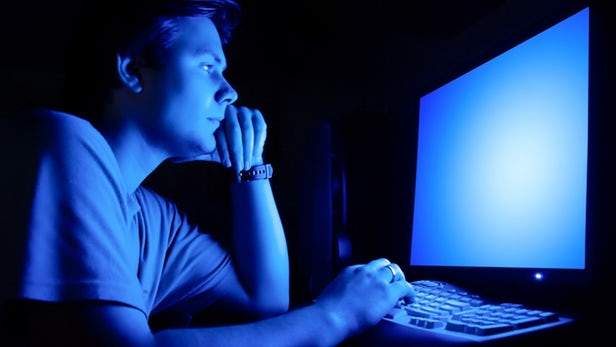Here's How You're Destroying Your Eyes
Posted by VIVEK TIWARI

If you spend more than 2 hours a day in front of computer, TV or smartphone screens, you could be leading your eyes towards permanent blindness.

Smart phones, laptops, and other handheld devices all transmit light. However, the blue light in particular is found to be toxic for your eyes.
Scientists at the University of Toledo may have discovered how blue light emitted from your technology has a potential to lead to macular degeneration — one of the leading causes of vision loss in the United States. A similar case was published by Harvard Medical School in August this year, exposing the dark side of blue light.
“It’s no secret that blue light harms our vision by damaging the eye’s retina” said Ajith Karunarathne, PhD, assistant professor at the University of Toledo’s department of chemistry and biochemistry in a released statement.
Macular degeneration is the result of photoreceptor cell death in the retina. The function of the photoreceptor cells is to capture visual images and signal them to the brain using a molecule called retinal.
The main source of blue light is the sun, and our bodies are programmed to respond to that light. During the day, the blue light in sunlight boosts our attention, memory, energy levels, reaction times, and overall mood. It’s the signal to our brains that we should be up and about. Absence of blue light signals that we should be resting.
The problem in modern times is that we are surrounded by artificial sources of blue light that confuse these signals, particularly LED and fluorescent lights and the screens of our electronic devices. Blue light suppresses the release of melatonin in our brains, which leads to a lower quality of sleep, which in turn can contribute to a variety of negative health effects.
What are the harmful effects of blue light?
Exposure to blue light for over 2 hours in a day can lead to:
- Digital eyestrain: Blue light from computer screens and digital devices can decrease contrast leading to digital eyestrain. Fatigue, dry eyes, bad lighting, or how you sit in front of the computer can cause eyestrain. Symptoms of eyestrain include sore or irritated eyes and difficulty focusing.
- Retina damage: Studies suggest that continued exposure to blue light over time could lead to damaged retinal cells. This can cause vision problems like age-related macular degeneration.
- Induce headaches or migraine attacks and worsen pain or other symptoms.
- Lead to eye fatigue and pain, both indicators of computer vision syndrome.
- Suppress melatonin production, which can lead to sleep deprivation.
How can you protect your eyes?
Here’s what you can do to protect yourself:
- Invest in a pair of NoBlue lenses, which helps block harmful blue rays.
- Limit the amount of time you are exposed to blue light, especially before bedtime.
- Avoid the urge to take your electronic devices into the bedroom, as any exposure can alter your circadian rhythms.

What about blue filtering apps?
Apple features a "night shift" mode in its iOS devices and many other smartphone manufacturers have put similar features in their devices. However, these apps are negligible in reducing blue light. While they do minimize blue color from appearing in our screens, they cannot eliminate the intensity of blue light that comes along with our screens.


